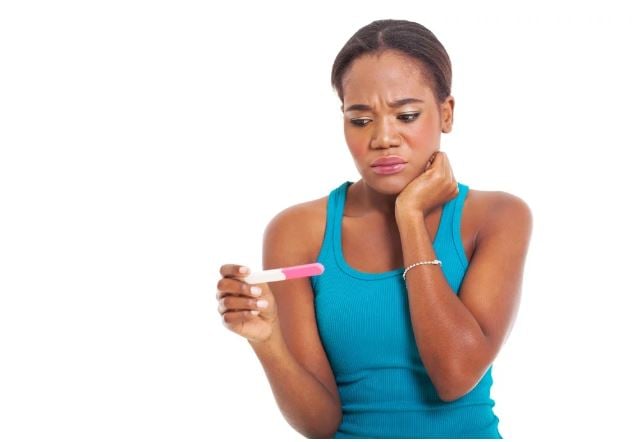Nancy Umeh, the Nigerian chef and public scientist, recently revealed her seven-year battle with secondary infertility — a journey that ultimately led her to embrace surrogacy for her third child.
Secondary infertility is a condition that affects countless couples worldwide but often goes unspoken. Despite its prevalence, it remains a silent struggle for many.
A study reveals that 52 percent of couples in Africa struggle with secondary infertility. Another research found that the prevalence of secondary infertility is approximately equal to that of primary infertility.
What is secondary infertility?
Secondary infertility is the inability to conceive or carry a baby to term after previously giving birth without any fertility treatments. It affects men and women equally.
What causes secondary infertility?
Several factors can contribute to secondary infertility. These factors include:
- Age
Biologically, fertility is at its peak around age 20. It begins to decline at 30, and the decline speeds up after age 35.
So, age plays a role in secondary infertility. A 2018 study showed that couples experiencing secondary infertility were older than those with primary infertility.
While healthy couples in their 20s and early 30s have a 25 percent chance of getting pregnant in a cycle, that number drops precipitously when the woman is older.
According to the American Society for Reproductive Medicine, a woman’s chance of pregnancy success is less than 5% per cycle at age 40. This is because the quantity and quality of a woman’s eggs decline with age.
- Ovulation disorders
Ovulation disorders are one of the most common causes of secondary infertility. According to studies, 40% of women battling infertility do not consistently ovulate.
The problem of ovulation is caused by several reasons including:
- The most common cause, polycystic ovary syndrome (PCOS)
- Primary ovarian insufficiency (POI)
- Decreased egg production related to aging
- Thyroid or other endocrine disorders that affect hormone production and
- Lifestyle factors, such as weight, nutrition, and alcohol or drug misuse
- Problems with the uterus or blocked fallopian tubes
These cause secondary infertility. If there is a blockage in the fallopian tubes, sperm and egg may not be able to meet. Blockage can be caused by surgery or pelvic infection.
The uterus may also have a structural or tissue defect that prevents implantation. Endometriosis, uterine fibroids uterus scarring (during surgery like C-section), and abnormality in the shape of the uterus are among the conditions that can affect the uterus.
- Infections
Sexually transmitted infections can cause pelvic inflammatory disease.
This can lead to scarring and blockage of the fallopian tubes which ultimately leads to infertility.
- Men factors
Factors like low testosterone levels, testicular varicocele, enlarged prostate and low sperm count and mobility are some causes of secondary infertility in men.
About 30% of infertile men have a testicular varicocele. An enlargement of veins in the scrotum can cause low sperm production.
An enlarged prostate can lower sperm count and make it hard to have a normal ejaculation.
What are the symptoms of secondary infertility?
The major symptom of secondary infertility is the inability to conceive after a year of trying.
However, other symptoms are caused by other factors. They include:
- Irregular menstrual cycles
Absent or inconsistent menstruation may indicate hormonal imbalance or ovulation disorders. Meanwhile, these conditions affect the ability to conceive.
- Painful periods
- Hormonal changes like changes in weight and sexual desire, excessive hair growth, and acne.
How can secondary infertility be treated?
There are various options to improve the chances of conceiving. However, the treatment option will depend on the cause of infertility and sometimes personal preference.
Here are the treatment options available for secondary infertility:
- Medications
There are several medication options. For infection, there are drugs used to treat the infection and also improve fertility.
There are also drugs like clomiphene (Clomid) and letrozole used to stimulate hormones and help women ovulate.
- Surgery
Surgery is most recommended when there is a structural problem in the uterus or fallopian tubes.
A minimally invasive procedure called a hysteroscopy is used to treat endometriosis, clear fallopian tube blockages, or remove scar tissue, polyps, and fibroids from the uterus.
In men, surgery is most commonly used to remove varicoceles. Surgery also can fix blocked or scarred epididymis tubes that store and carry sperm.
- Advanced Reproductive Technology (ART)
The two common procedures are intrauterine insemination (IUI) and IVF.
With IUI, sperm is collected and then inserted into the uterus at the time of ovulation.
In IVF, an egg is removed from the woman’s ovaries and fertilised with sperm in a laboratory. The fertilised egg, called an embryo, is then returned to the woman’s womb to grow and develop.
The procedures have a 24% success rate, according to 2019 CDC data.
To improve the chances of getting pregnant, maintain a healthy lifestyle.
Copyright 2025 TheCable. All rights reserved. This material, and other digital content on this website, may not be reproduced, published, broadcast, rewritten or redistributed in whole or in part without prior express written permission from TheCable.
Follow us on twitter @Thecablestyle

